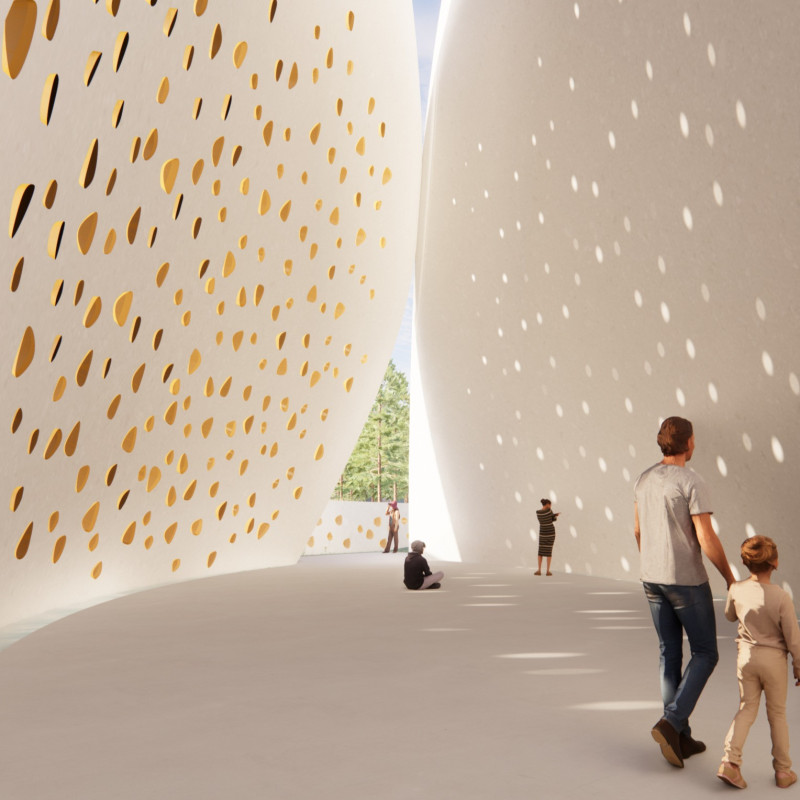5 key facts about this project
The design consists of two interlacing forms created from cast-in-place concrete, which do not enclose space entirely, allowing for a seamless interaction between the interiors and the natural surroundings. The incorporation of amber-like niches symbolizes warmth and memory, resonating with the cultural significance of amber in Latvian heritage. Enhanced by integrated LED lighting, these niches create a vibrant atmosphere, facilitating a dynamic relationship between the structure and the shifting sunlight.
Exploration of Unique Design Features
One of the most distinctive aspects of the "Songs of Amber" project is its emphasis on interactivity. Rather than serving solely as a memorial, the columbarium is designed to be an engaging space for families and communities, encouraging gatherings and ceremonies. The interplay of architectural forms and water features fosters a tranquil environment conducive to reflection. The use of amber-like resin as a material adds an additional layer of cultural connection, emphasizing the idea of preserving memories in a format that is both tangible and luminous.
Moreover, the pathways leading to the columbarium have been strategically planned to encourage visitors to meander through the landscape, enhancing the experience of engagement with nature. The incorporation of auditory elements, such as traditional Latvian songs triggered within the niches, provides a multisensory experience that is rare in memorial architecture.
Focus on Spatial Configuration and Materiality
The overall layout of the project facilitates various forms of use, making it flexible for different types of remembrance services. The spatial configuration allows for communal gatherings, ceremonies, and private contemplation, while the flowing forms create a sense of unity with the surrounding environment. Material choices are designed to minimize environmental impact; cast-in-place concrete not only ensures durability but also allows for smooth, tactile surfaces that invite physical interaction.
The integration of water features complements the overall design, as sound and movement create a soothing atmosphere that enhances the reflective purpose of the space. The project fully embraces the concept of memory as an ongoing process, where visitors can engage with both the living community and their personal histories.
For those intrigued by the architectural elements of the "Songs of Amber," exploring its architectural plans, sections, and design details can provide a comprehensive understanding of its innovative approach and thoughtful integration within the context of Latvian culture. The distinct interaction of form, function, and materiality in this project invites further examination of how architecture can serve as a vessel for memory and community connection.


























